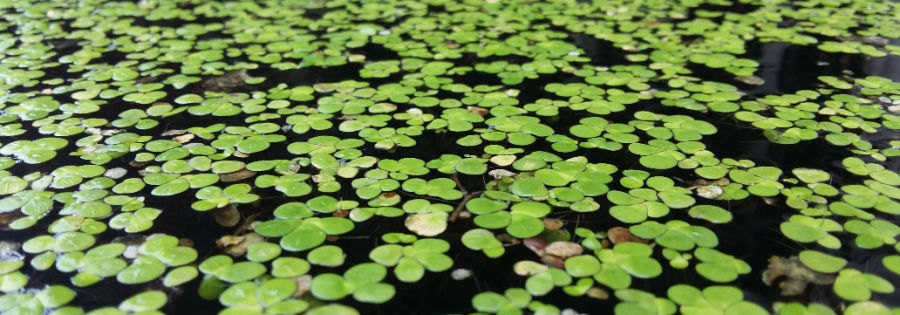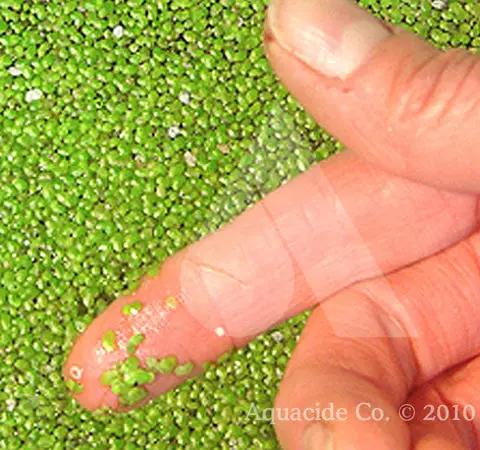Duckweed, a common aquatic plant, can quickly take over a pond if left unchecked. Its rapid growth and ability to multiply make it a nuisance for pond owners. If you’re dealing with an invasion of duckweed in your pond, don’t worry! There are several effective methods to get rid of duckweed and restore the balance of your aquatic ecosystem.
1. Manual Removal
One of the simplest and most cost-effective ways to control duckweed in your pond is by manual removal. You can use a fine mesh net or a pond skimmer to scoop up the duckweed from the surface of the water. Regularly removing duckweed by hand can help prevent it from spreading and taking over your pond.

Credit: www.coastalspray.com
2. Biological Control
Introducing natural predators of duckweed, such as certain species of fish or ducks, can help control its growth. Fish like grass carp or koi can feed on duckweed, keeping its population in check. However, be cautious when introducing new species to your pond and ensure they won’t disrupt the existing ecosystem.
3. Aeration
Improving the aeration of your pond can help reduce the growth of duckweed. By installing a fountain or aerator, you can increase oxygen levels in the water, making it less favorable for duckweed to thrive. Aeration also helps promote the growth of beneficial aquatic plants that can outcompete duckweed.

Credit: www.pinterest.com
4. Chemical Treatments
If manual removal and biological control methods are not sufficient, you may consider using chemical treatments to get rid of duckweed. There are herbicides specifically designed to target duckweed while minimizing harm to other aquatic life. It’s essential to follow the instructions carefully and use chemicals responsibly.
5. Shade the Pond
Duckweed thrives in sunlight, so shading your pond can help inhibit its growth. Planting trees or installing shade sails around the pond can reduce the amount of sunlight reaching the water’s surface, making it less conducive for duckweed to spread.
6. Nutrient Management
Duckweed thrives on excess nutrients in the water, such as nitrogen and phosphorus. By managing the nutrient levels in your pond, you can help prevent duckweed from proliferating. Avoid overfeeding fish, minimize the use of fertilizers near the pond, and consider using nutrient-absorbing plants like water lilies.
7. Mechanical Control
Using mechanical tools like a pond vacuum or a surface skimmer can help remove duckweed efficiently. These tools can suck up the duckweed from the water’s surface, making it easier to control its spread. Regular maintenance with mechanical control methods can prevent duckweed from regrowing.
8. Cover the Pond
Another method to get rid of duckweed is by covering the pond with a pond cover or floating barrier. This physical barrier prevents duckweed from receiving sunlight and nutrients, ultimately leading to its decline. Ensure the cover is securely in place and allows for proper water circulation.
9. Integrated Pest Management
Adopting an integrated pest management approach can help effectively control duckweed while minimizing environmental impact. By combining multiple control methods like manual removal, biological control, and nutrient management, you can create a sustainable solution for managing duckweed in your pond.
10. Regular Maintenance
Prevention is key when it comes to managing duckweed in a pond. Regularly inspecting your pond for signs of duckweed and implementing control measures promptly can help prevent a severe infestation. Consistent maintenance and monitoring are essential for keeping duckweed at bay.
Conclusion
Dealing with duckweed in a pond may seem like a daunting task, but with the right strategies and techniques, you can effectively control its growth and restore the health of your aquatic ecosystem. Whether you opt for manual removal, biological control, or chemical treatments, finding the right combination of methods that work for your pond is crucial. By following these tips and staying proactive in your pond maintenance, you can say goodbye to duckweed and enjoy a balanced and thriving pond environment.


